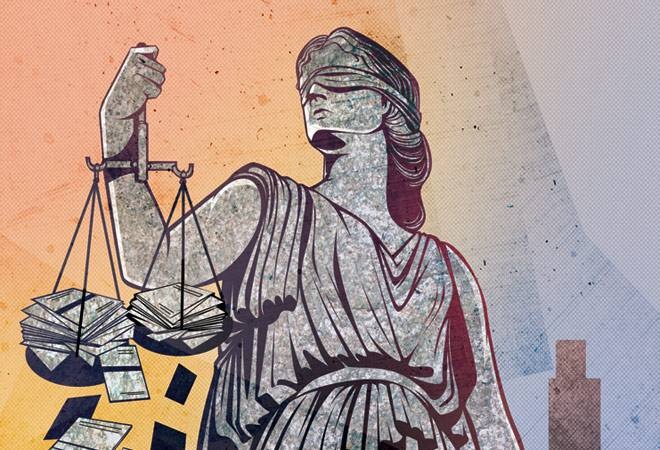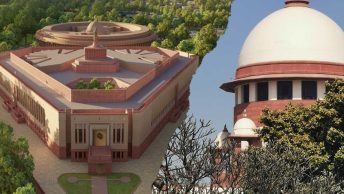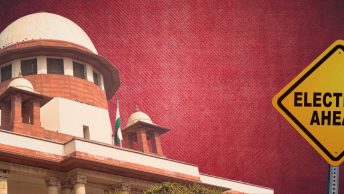Summary: In this piece, our analyst, Aamuktamalyada, deals with the succession rights of children born out of void/voidable marriages.
An important consideration that the courts in India have wrestled with has been the intersection between religious customs and legal reforms in inheritance laws. This tussle recently played out in the context of the inheritance rights of ‘illegitimate’ children. In a case primarily dealing with the concept of notional partition, the Supreme Court in Revansiddappa v. Mallikarjun (“Revanasiddappa”) held that children from void and voidable marriages would only be entitled to inherit the self-acquired property of their parents and not the Hindu Joint Family Property. This explainer piece discusses the considerations before the Court and its reasoning in arriving at such an interpretation and briefly presents an alternative approach it should have employed.
The evolving conception of the treatment of ‘illegitimate’ children can be tracked through Section 16 of the Hindu Marriage Act of 1955 (“HMA”) and the amendments made to it. A critical juncture in this evolution was witnessed in 1976 when an amendment to the Act replaced the term “illegitimate children” with the more neutral and inclusive term “children born out of void and voidable marriages.” This amendment aimed to strip away the social stigma surrounding these children, with the legislative intent to affirm their rights and identities without tethering them to the circumstances of their birth – in essence, to bring to these legislations the constitutional principle of equality and equal treatment as enshrined in Article 14 of the Constitution.
While the 1976 amendment directly affected the HMA, its reverberations extended to related statutes, including the Hindu Succession Act of 1956 (“HSA”). The prior conditions laid down in Section 16 were that unless and until a decree of nullity was granted to void and voidable marriages, the children from those marriages would continue to be treated as illegitimate children. In case the marriage’s voidability or voidness was later discovered, such children would have no recourse.
The Supreme Court, in the case of Kalliani Amma (Smt) v. K Devi noted that “…the intention of Parliament could not be fully reflected in the Act… The 1976 amendment hit at a crucial contention, conferring the benefit of legitimacy on children born from void or voidable marriages, regardless of whether a decree of nullity has been adopted.” This, in essence, holds such children eligible to inherit the self-acquired property of their parents regardless of whether the marriage between their parents is valid, void, or voidable as under the HMA.
The Revanasiddappa judgment, against this historical backdrop, holds immense significance. By determining the shares of coparcenary property to which the children from void and voidable marriages are entitled, the judgement also deals with the treatment and legal conception of such children. However, while navigating this historical context, the judgment raises concerns by limiting its focus to Mitakshara law and neglecting the constitutional principle of equality. It draws a distinction in the shares of coparcenary property to which children from void and voidable marriages are entitled, failing to fully align with the progressive legal reforms and the intention behind the 1976 amendment.
Notional partition, which occurs when the head of a branch within a larger Hindu joint family (“HJF”) passes away, confers on all their remaining heirs a share equal to one they would have obtained if the property was self-acquired. This concept was introduced in the HSA to benefit the widow and daughters of the head, who would otherwise be disadvantaged when the share is thrown back into the family hotchpot for the coparceners.
Revanasidappa brought the contention before the Court that children who subsist from void and voidable marriage of such a member from an HJF are also entitled to a share in this notional partition of the property. This stands in stark opposition to the traditional Hindu norms, where ‘illegitimate’ children may be treated as members of their father’s HJF but are in no way entitled to a share in the coparcenary property.
In 2013, a two-judge bench of the Supreme Court ruled that children born from such marriages would be entitled to a share equal to that of the other heirs when a notional partition is deemed to have occurred. The 3 judge constitutional bench that took up this case in appeal passed judgment in September of 2023, concurred. However, both Benches emphasized that, while the child would be entitled to a share in the notional partition, they would not be given a share in the coparcenary property.
Granting inheritance rights to children from void and voidable marriages is intended to be a progressive stride as it epitomizes a crucial shift toward equality. The judgment, in its affirmation of a child’s entitlement to a share in the notional partition but denial of a share in the coparcenary property, reflects a hesitant and incomplete step toward equality.
However, what is concerning in this case is the judiciary’s handling of the appeal in the Revanasiddappa case to a three-judge constitutional bench. The judgement reveals a stark misalignment with the principles of justice and equality. The decision to confine the focus exclusively to Hindu Mitakshara law while neglecting the broader constitutional mandate encapsulated in Article 14 – the right to equality, underscores a systemic failure.
The very act of appealing to a constitutional bench implies a recognition of the profound constitutional implications at play. However, the bench’s myopic concentration on Mitakshara law not only disregards the evolving legal landscape, as furthered by the legislature through amendments to the Hindu Code Bills but also represents a missed opportunity to robustly address the constitutional concept of equality.
Article 14 of the Constitution guarantees equality before the law and equal protection of the laws to all citizens. By sidestepping this fundamental tenet and choosing to uphold a specific religious law without careful consideration of equality principles, the judiciary has fallen short of its duty to safeguard the rights of all individuals, regardless of their parentage or the circumstances of their birth.
Whether through enactments of the legislature or judicial pronouncements dealing with children from live-in relationships, the trend in recent years has been to bridge the gap between children born from all kinds of relationships and ensure that children do not face disabilities from the nature of the relationship between their parents. In this case, the approach that was open to the court was to discuss the constitutional challenge to the provision itself. However, this was not done, and while it was brought up in the counsel’s submissions, the judgment authored by the Chief Justice does not delve into a discussion of this issue.
The Constitution Bench’s decision to narrowly interpret the Revanasiddappa case within the confines of Mitakshara law, without proper consideration of constitutional principles, is a glaring lapse in upholding the principles of justice and equality. This oversight diminishes the court’s role as a vanguard of constitutional values and its commitment to fostering an egalitarian legal framework for all citizens. It is high time for a revised approach from the court, ensuring constitutional principles take precedence over parochial interpretations.
Aamuktamalyada is a second-year law student at NALSAR University of Law, Hyderabad.







ebfe2g
4wwqf7
uwxuap
t7q8a2
pol5ch
q153m9